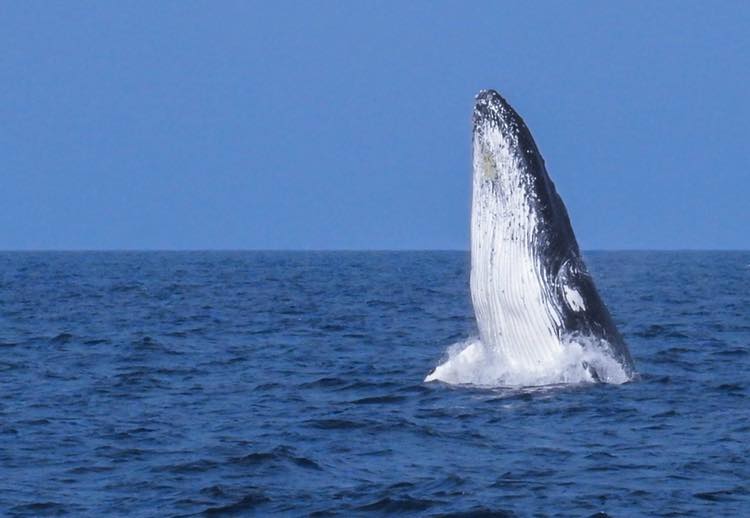
Humpback whales have started swimming through Bundaberg Region waters on their annual migration north.
Lady Musgrave Experience managing director Brett Lakey said about three weeks ago they spotted the first humpback of the whale-watching season just off the coast of Lady Musgrave Island.
This was similar to last year when the first humpback whales in the Bundaberg Region for 2019 were spotted on 23 May by the crew on Lady Musgrave Experience’s Reef Empress and that kicked off a fantastic whale-watching season.
With COVID-19 restrictions in place, the team at Lady Musgrave Experience are preparing for another sensational year with whale-watching tours starting on 5 July.
“After a 100 per cent success rate with great encounters last year, we’re looking forward to showcasing our tour from Bundaberg,” Brett said.
“With an estimated 40,000 whales this year, and such early arrivals it’s shaping up to be another amazing season.”
Humpback sighting positive news for tourism
Environment Minister Leeanne Enoch said whales are a great tourist attraction.
“Queenslanders look forward to this time of the year as the humpback whales return to our coastline, but if you’re on the water it’s important to marvel from a distance,” Ms Enoch said.
“Whales are a great tourist attraction, which is great news for tourism operators who have been impacted by COVID-19. Keeping the whales safe and healthy is key to this success.
“Boaties and recreational water users who get too close to the whales risk penalties or injury.
“Occasionally whales can become entangled in nets or stranded, and we encourage anyone who sees that to report it.”
The Marine Animal Release Team (MART) is specially trained to deal with whale entanglements and the public are advised to call them if whales become stranded.
“Boats must remain 100 metres away from whales, while personal watercrafts like Jet Skis have to maintain a 300-metre distance,” Ms Enoch said.
“For special interest whales, like the white whale Migaloo, Jet Ski riders must keep 500 metres away.
“These rules are in place to protect the public as well as these magnificent mammals.”
If there are three boats within 100 metres, other skippers must remain at least 300 metres away, so the pod of whales are not crowded.
Penalties for getting too close to humpback whales include a minimum $652 on the spot fine or a maximum fine of $21,540.
Louise Matthiesson from the Queensland Conservation Council said the increase in whale populations is something to be proud of.
“Whales are a success story for conservation and show what we can do when we take action to protect a species and they flourish,” Ms Matthiesson said.
“At the moment, the whale population is increasing by about 10 per cent each year which is great news.”
Ms Enoch said that humpbacks will be in Queensland waters until spring when they head south to Antarctic waters, and boaties can expect to be whale watching up until November.
“Skippers should be vigilant at all times including at night and move slowly away if whales approach any small crafts.
“So slow down, keep your distance, and watch out for whales at all times,” Ms Enoch said.
People can report stranded or entangled whales, or people breaching the whale approach limits by calling DES on 1300 130 372.
Humpback whale fast facts:
- In 1962 the humpback whale population was estimated at 500 animals due to hunting
- Up to 95 per cent of the population had been killed between 1952 and 1962
- A humpback whale’s brain can weigh up to 5kg, and its heart can be 1.5m long
- In 2007 the recovering population was estimated at about 10,000 animals
- By 2013 the recovering population was estimated at about 19,000 animals
- Today, the whale population is increasing by about 10 per cent each year and is approaching pre-hunting estimates of about 40,000 animals
- The annual whale migration is a round trip of about 9000km, and whales usually travel between 6.5-9.2km per hour
- Humpback whales can live for 50 years, meaning they can swim up to 500,000km in their lifetime
- For more information about approach limits click here.




